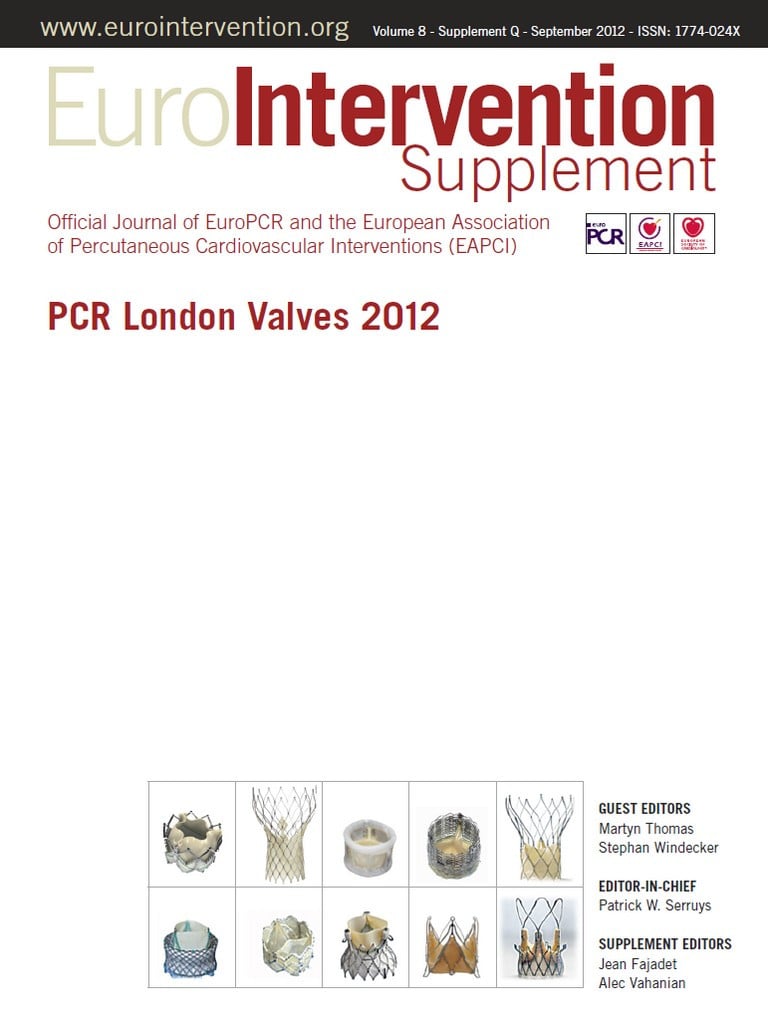![]()
Pot-pourri
Early and late changes in quality of life following TAVI using the transfemoral and transapical approaches
Aims: Balloon-expandable transcatheter aortic valve implantation (TAVI) has been shown to improve health-related quality of life (QoL) in PARTNER participants at one and 12 months for all employed measures. The aim of our study was to evaluate the effects of access route upon clinical results and QoL in patients undergoing either transfemoral TAVI (TF-TAVI) or transapical TAVI (TA-TAVI).
Methods and results: A retrospective analysis was performed upon data from 264 consecutive patients receiving TF-TAVI or TA-TAVI at two European centres. QoL was assessed using the self-reported EQ-5D questionnaire, as well as a visual analogue scale of overall health state (EQ-VAS). 179 patients underwent TF-TAVI (mean age 81.7±6.1 years, 66% female) and 85 patients underwent TA-TAVI (mean age 79.6±9.0 years, 62% female). Patient characteristics in the two cohorts were similar except for higher logistic EuroSCORE in the TA-TAVI patients (p=0.014), greater incidence of peripheral artery disease (p=0.002), porcelain aorta (p=0.002), prior surgical aortic valve replacement (SAVR) (p=0.002) and prior cardiac surgery (p<0.001). Procedural success was comparable between the two cohorts (98.3% for the TF-TAVI group vs. 100% for the TA-TAVI group, p=0.553). At 30 days, both groups demonstrated significant increases in aortic valve area and mean transvalvular gradient (p<0.001 for both). Post-procedural ICU/CCU and overall in-patient stay were shorter in the TF-TAVI group (p<0.001 and p<0.001). The 30-day mortality rate was 3.9% for the TF-TAVI group and 2.4% for the TA-TAVI group, respectively (p=0.723). At baseline, TA-TAVI patients reported more significant problems (EQ-5D score ≥2) in mobility (p<0.001), self care (p<0.001) and usual activities (p=0.002). They also reported lower overall health with EQ-VAS median 15 points (interquartile range [IQR] 10-30) vs. 50 points ([IQR 20-60]; p<0.001). At 30 days, the TF-TAVIs reported fewer problems with usual activity (p=0.013) and pain/discomfort (p<0.001). Overall health was improved in both groups but to a greater magnitude in the TF-TAVI patients (EQ-VAS 85 [IQR 75-90] vs. 70 points [IQR 60-80], p<0.001) compared to baseline. Despite this, the absolute improvement in EQ-VAS (ΔEQ-VAS) at 30 days was most marked in TA-TAVI patients (55 [IQR 30-61.3] vs. 40 points [IQR 30-56.3], p=0.022) By one year there were no differences between TF-TAVI and TA-TAVI patients in any EQ-5D domain nor in EQ-VAS, but the greater absolute improvement in the TA-TAVI group remained (60 [IQR 50-70] vs. 55 points [IQR 40-70], p=0.031).
Conclusions: TAVI is effective in improving QoL with both TA-TAVI and TF-TVI approaches in patients not eligible for SAVR. Overall health-related QoL is greater at the earlier time point of 30 days in the TF-TAVI cohort. By one year the improvements are similar in both groups. However, the magnitude of improvement in QoL is greater in the TA-TAVI patients at both 30 days and one year.

